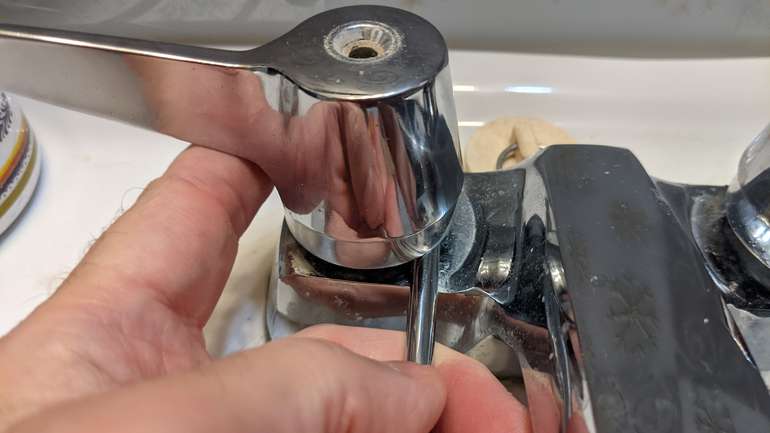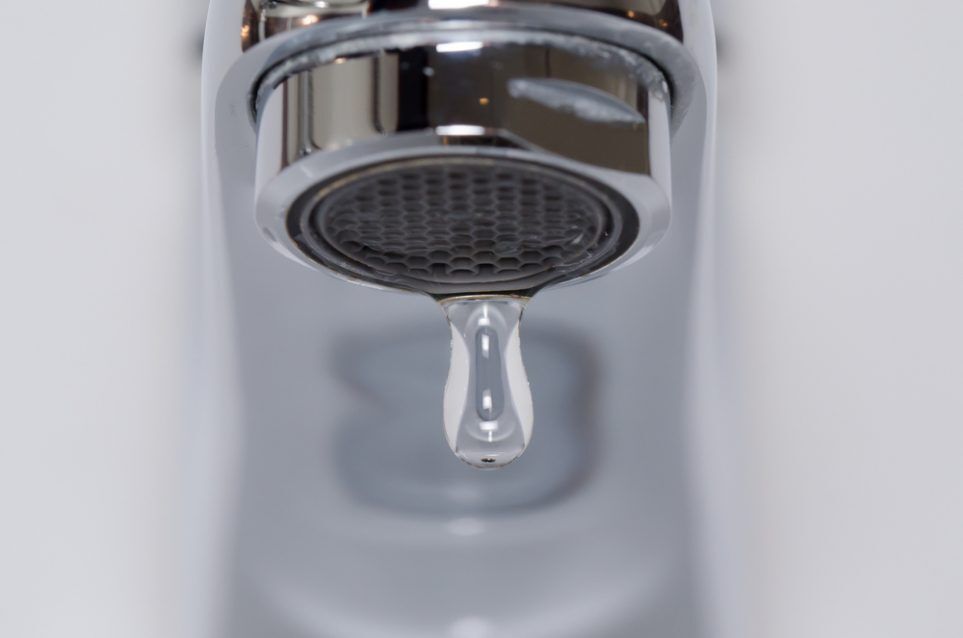An Explanations Behind Correcting a Dripping Faucet
An Explanations Behind Correcting a Dripping Faucet
Blog Article
This great article further down on the subject of Should I Repair or Replace a Leaky Faucet? is truly enjoyable. Check it out for your own benefit and decide what you think about it.

Trickling faucets might look like a minor trouble, however their influence surpasses simply the annoyance of the audio. From drainage to sustaining unneeded financial costs and health threats, overlooking a trickling faucet can cause various effects. In this write-up, we'll look into why it's crucial to resolve this typical home problem quickly and successfully.
Wastage of Water
Ecological Impact
Leaking taps contribute dramatically to water wastefulness. According to the Epa (EPA), a solitary tap trickling at one drip per second can waste more than 3,000 gallons of water per year. This not just pressures water resources but likewise influences ecosystems and wild animals dependent on them.
Step-by-Step Overview to Taking Care Of a Dripping Tap
Devices Required
Before trying to deal with a dripping faucet, gather the required tools, including a flexible wrench, screwdrivers, substitute components (such as washing machines or cartridges), and plumber's tape.
Typical Tap Issues and Their Solutions
Determine the sort of faucet and the certain issue triggering the drip. Usual problems consist of worn-out washing machines, rusty shutoff seats, or malfunctioning O-rings. Describe manufacturer directions or on-line tutorials for step-by-step assistance on repair services.
Financial Costs
Boosted Water Costs
Beyond the environmental effect, leaking taps can pump up water costs considerably. The gathered wastage over time translates right into greater energy expenditures, which can have been stayed clear of with timely repairs.
Prospective Building Damages
Furthermore, long term dripping can cause damage to components and surface areas surrounding the faucet. Water accumulation can trigger staining, rust, and even architectural issues if left neglected, causing extra fixing expenses.
Health and wellness Problems
Mold And Mildew and Mildew Development
The consistent presence of moisture from a dripping faucet develops an optimal atmosphere for mold and mildew development. These fungi not only jeopardize indoor air high quality yet also posture wellness dangers, especially for individuals with respiratory problems or allergies.
Waterborne Illness
Stationary water in dripping taps can come to be a breeding place for germs and various other pathogens, boosting the threat of waterborne conditions. Impurities such as Legionella microorganisms grow in stationary water, potentially bring about significant ailments when ingested or inhaled.
Do it yourself vs. Expert Repair work
Advantages and disadvantages of DIY Repair Service
While some may attempt to fix a trickling faucet themselves, do it yourself repairs include their own set of obstacles. Without proper knowledge and devices, do it yourself attempts can exacerbate the problem or lead to incomplete repair services, lengthening the trouble.
Benefits of Employing a Specialist Plumber
Employing a specialist plumber makes certain that the underlying reason for the trickling faucet is attended to effectively. Plumbers have the experience and devices to identify and fix faucet problems efficiently, saving time and decreasing the threat of further damage.
Environmental Responsibility
Specific Payment to Preservation
Taking duty for fixing dripping faucets aligns with broader efforts towards water conservation and environmental sustainability. Every individual's activities collectively make a significant effect on protecting priceless sources.
Lasting Living Practices
By focusing on timely repair services and embracing water-saving routines, people add to lasting living methods that profit both existing and future generations.
Preventive Measures
Regular Upkeep Tips
To stop trickling taps, do regular upkeep such as cleaning aerators, evaluating for leaks, and changing worn-out parts quickly. Furthermore, take into consideration setting up water-saving gadgets or updating to extra efficient fixtures.
Relevance of Prompt Repairs
Resolving trickling taps as soon as they're seen prevents further water wastage and prospective damages, inevitably conserving both water and money over time.
Influence On Residential Property Worth
Assumption of Well-Maintained Home
Preserving a building in good condition, including addressing upkeep concerns like dripping faucets, enhances its perceived worth and desirability among prospective purchasers or lessees.
Influence on Resale Value
Features with properly maintained plumbing fixtures, consisting of faucets, command higher resale values in the real estate market. Attending to leaking faucets can add to a favorable impression during property inspections and arrangements.
Conclusion
Resolving a leaking faucet goes beyond plain benefit; it's a crucial step toward conserving water, lowering economic prices, and safeguarding health and building. Whether via DIY repair work or specialist support, doing something about it to deal with trickling taps is a tiny yet impactful means to promote accountable stewardship of sources and contribute to a healthier, much more sustainable future.
How to Fix a Leaky Faucet: Step-by-Step Repair Guide
A leaky faucet may seem like a simple annoyance, but if it's not fixed promptly, that leak could cost hundreds to potentially thousands. From water damage to mold, mildew, and high water bills, even a tiny leak can be catastrophic if left unattended. Damage like this can even affect the overall value of your home, so it's important to take the right approach for leaky faucet repair. You may need the help of a plumber in some cases, but we've got a few tips you can try on how to fix a leaky faucet before calling the pros.
Four Faucet Types
When you're learning how to fix a leaky faucet, the first step is knowing what kind of faucet you're working with! There are four common types.
Cartridge Faucets
Cartridge faucets come in one- or two-handled varieties. In one-handled cartridge faucets, hot and cold water combines in a single cartridge. In the two-handled versions, hot and cold water are controlled separately and mixed in the faucet.
Ball Faucets
Ball faucets have a single lever you push up and down to adjust the pressure and rotate to change the temperature. A slotted metal ball controls the amount of water allowed into the spout.
Compression Washer Faucets
They're the oldest type of faucet, but they're still used in many homes — especially older ones. Compression faucets have two separate handles that, when turned, raise or lower the washer that seals a water valve. This valve stops water from flowing through the faucet when it is turned off.
Disc Faucets
Disc faucets rarely need to be repaired due to their maintenance-free design. The water flow is controlled by two discs — the upper one raises and lowers against a fixed lower disc, creating a watertight seal. If your disc faucet starts leaking, you may need to replace the seals or clean residue buildup from the inlets.
Fixing a Leaky Faucet
Step 1: Turn Off the Water
Whether you're learning how to fix a leaky bathtub faucet or how to fix a leaky kitchen faucet, always turn off the water supply to your working area when you're fixing a leak. The last thing you want is a flood added to your list of things to fix.
Look for the shutoff valves below your sink or around the tub and turn them clockwise to stop the water flow. If your faucet doesn't have shutoff valves, you may need to turn off the water for the whole house. Check to make sure it's off by turning the faucet on. If nothing comes out, you're ready to start the repair.
Step 2: Take Apart the Faucet
How you disassemble your faucet depends on the type of fixture you have. You can use a flathead screwdriver to remove the caps on top of the handle or handles for cartridge and compression faucets. Inside, you should see handle screws. Unscrew these with a screwdriver to remove the handle.
Disc- and ball-style faucets will typically have an inlet screw near the handle, and removing that will reveal the interior of the faucet.
Detach the Valve Stem
For cartridge- and compression-style faucets, you'll see the inner valve stem or cartridge once you remove the faucet handles. If you have a compression faucet, unscrew the brass valve stem. If you have a cartridge faucet, pull out the cartridge. If your cartridge has been in place for a while, it may require some tools or extra force to remove it due to mineral deposits.
Examine and Replace Parts
Once you've removed the parts, check them out to confirm what needs to be replaced. You may see corroded rubber washers, O-rings, stems, or cartridges. On a ball-style faucet, check the seats and springs for damage.
If you need to repair a leaky disc faucet, check the inlet and seals on the lower disc.
Once you determine what parts must be replaced, visit your local hardware store. Bring the damaged parts with you to ensure you can purchase the correct components to replace them.
Clean Valves and Faucet Cavity
If you've removed a stem or cartridge, you may notice mineral buildup in the faucet's threads. Use white vinegar to clean the valve seat by soaking it for a few minutes, then scrub it away with a soft toothbrush and rinse with warm water. You can also clean the interior of the faucet in the same way.
Reassemble the Faucet
Once your faucet is cleaned and the required parts have been replaced, it's time to reassemble it. Put the pieces back together and slowly turn the water supply back on. Doing this slowly is crucial because too much initial water pressure can damage the new hardware you've just installed.
https://homewarranty.firstam.com/blog/how-to-fix-leaky-faucet

As a serious person who reads on How to Fix a Dripping or Leaky Faucet , I figured sharing that short article was important. Enjoyed reading our post? Please share it. Help somebody else check it out. Bless you for being here. Kindly come visit our website back soon.
Report this page